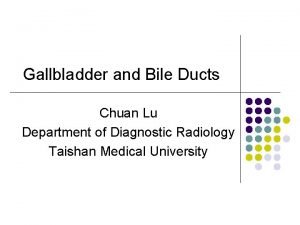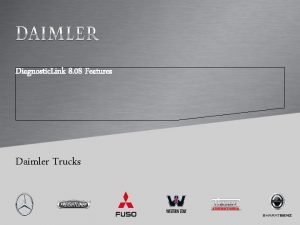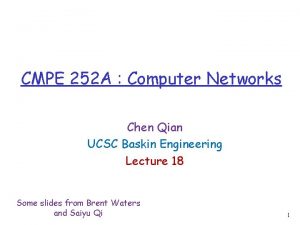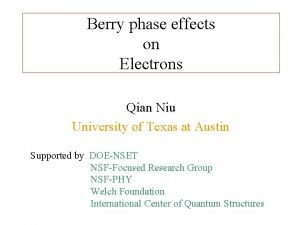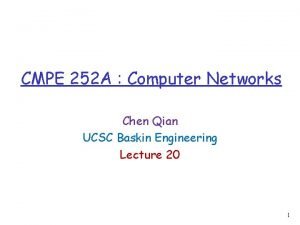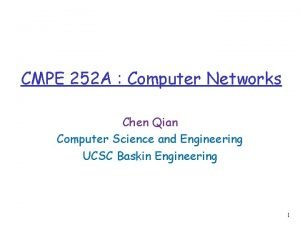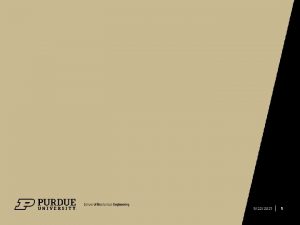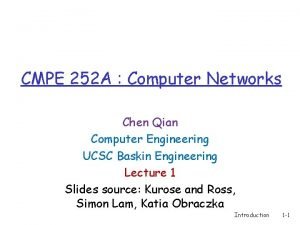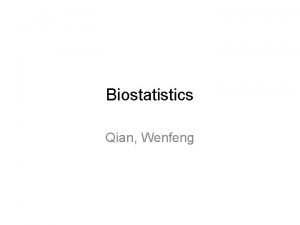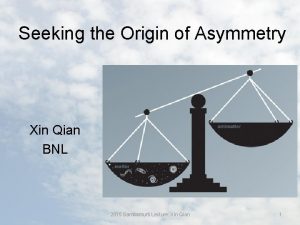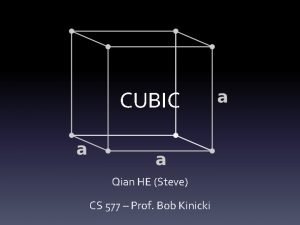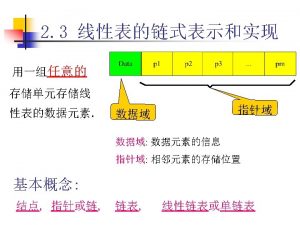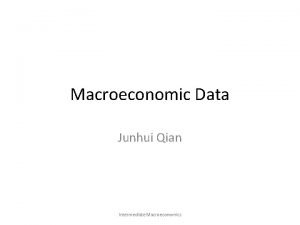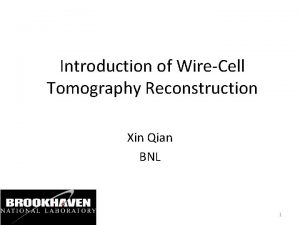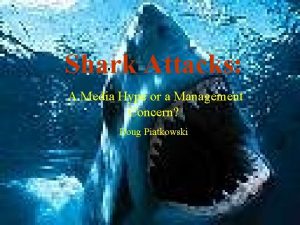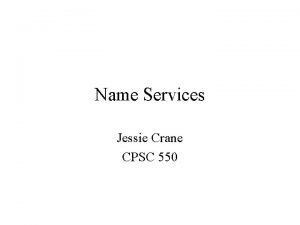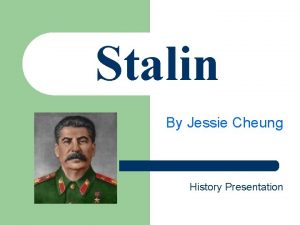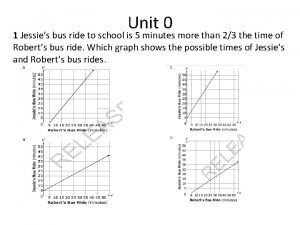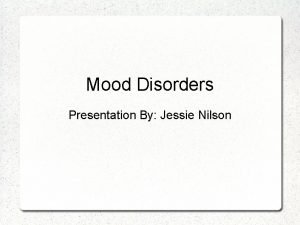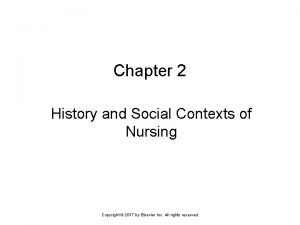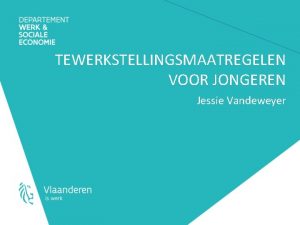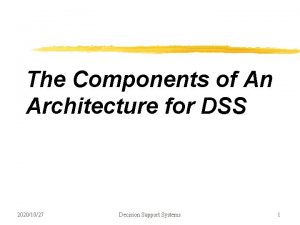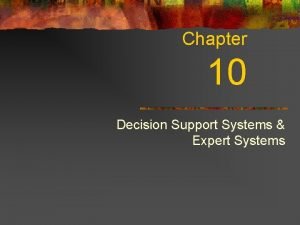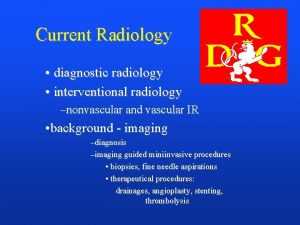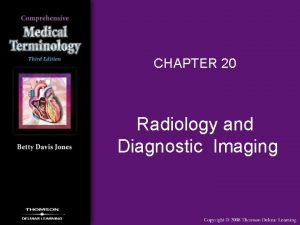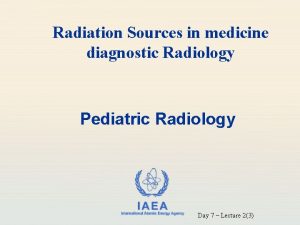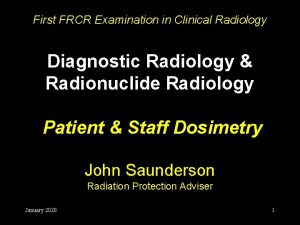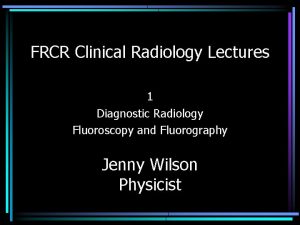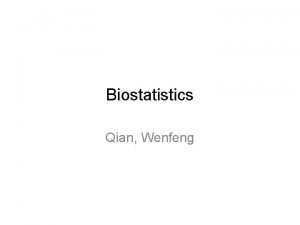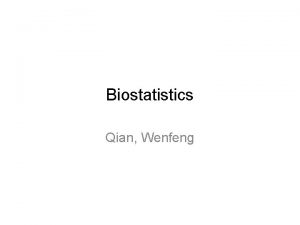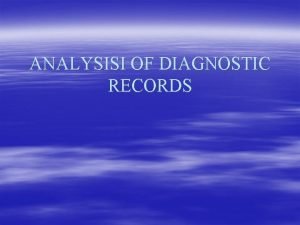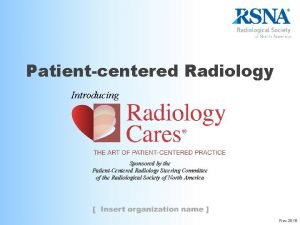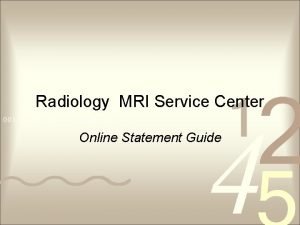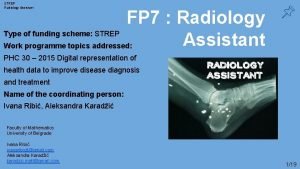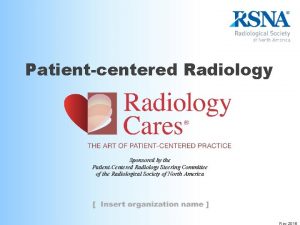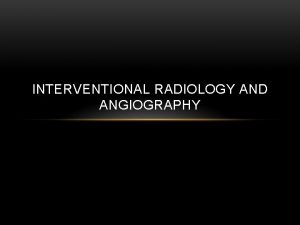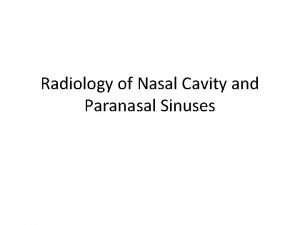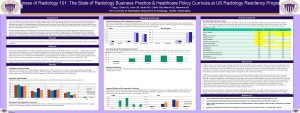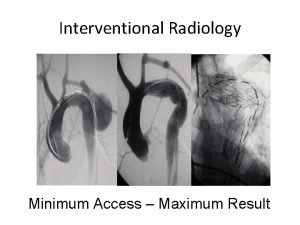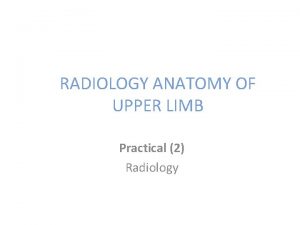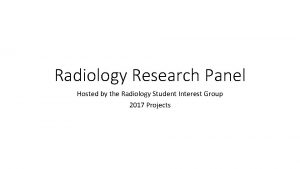STATdx Diagnostic Decision Support for Radiology Jessie Qian


















































- Slides: 50

STATdx ----Diagnostic Decision Support for Radiology 助益山东省千佛山医院放射专业医、教、研建设 Jessie Qian Cai 蔡倩 Peter Edelstein, M. D. Account Manager, Greater China Chief Medical Officer Elsevier Clinical Solutions

促进科学、技术与医疗发展的引领者 Marie Curie (Physics, Chemistry) Louis Pasteur (Chemistry) Alexander Fleming (Medicine) Galileo’s last and greatest work, published in 1638 by Elzevir, Discorsi e Dimostrazioni Matematiche Albert Einstein (Physics) Shinya Yamanaka (Medicine) John C. Mather (Physics) Francoise Barre-Sinoussi (Medicine) Craig C Mello (Medicine) Clinical. Key STATdx Expertpath

1) Elsevier公司介绍 2) STATdx培训 3) Elsevier资源分享



























| 30 在STATdx检索fibroxanthoma 首页 简洁 清晰 Fibroxanthoma检索结果

| 31 Fibroxanthoma诊断

| 32 Fibroxanthoma相似病例

| 33 Fibroxanthoma相关解剖

| 34 Fibroxanthoma鉴别诊断


Elsevier Journal Finder –免费 爱思唯尔选刊系统:http: //journalfinder. elsevier. com/



Cover Letter • • • Example Read by editors A crucial part of the manuscript submission package. An opportunity to convey important information to the editors. Help the editors reach a quicker decision. Tip the balance for peer review. Basic information: ü Editor Addressing ü Research originality & innovation ü Main conclusion ü Any supportable info to your submission ü Recommended reviewer ü Any conflict of interest in producing the research ü Details of any previous or concurrent submissions 所有作者的最终同意 阐述研究的重要性 推荐审稿人

https: //cn. webshop. elsevier. com/languageservices/languageediting/


JACC-Cardiovascular Imaging 10. 189 EDITOR-IN-CHIEF: Y. Chandrashekhar, MD Aims & Scope JACC: Cardiovascular Imaging provides readers with a broad, balanced view of all aspects of cardiovascular imaging. The Journal includes original clinical research on non-invasive and invasive imaging techniques including echocardiography, CT, CMR, nuclear, optical imaging, and cine-angiography. Advances in basic science and molecular imaging which are likely to substantially influence the clinical practice of medicine in the next decade (in diagnostic performance, understanding of the athogenetic basis of the disease, and therapy) are also featured. Other content will emphasize imaging for the practicing cardiologist, advocacy and practice management, and state-of-theart reviews. JACC: Cardiovascular Imaging Maintains a strong clinical focus with a broad appeal to the practicing clinician. Highlights the unique as well as complementary nature of each imaging modality within the "imaging continuum, " helping clinicians navigate through "modality parochialism" to scientifically identify which modality works best in what situation, and eventually developing "imaging algorithms. " Creates a dynamic continuing education forum for practicing clinicians with the obvious goal of improving patient care and outcomes. Harnesses the web to create a live, dynamic and interactive publication, in terms of content, learning, critique, and debate. | 42

Neuro. Image 5. 835 Editor-in-Chief: Peter Bandettini Aims & Scope Neuro. Image, a Journal of Brain Function, provides a vehicle for communicating important advances in the use of neuroimaging to study structure-function and brain-behavior relationships. Though the emphasis is on the macroscopic level of human brain organization, meso-and microscopic neuroimaging across all species will be considered if they provide advances that are of relevance to a systems-level understanding of the human brain. The main criterion on which papers are judged for Neuro. Image, is to what extent the scientific contribution helps advance our understanding of brain function, organization, and structure. Neuro. Image, also welcomes papers that explicitly address these questions in animal models or clinical populations. Papers that do not contain significant methodological development, and whose major contribution is to use imaging to advance the understanding of pathology, abnormal development, use of biomarkers or other questions of clinical utility should be referred to Neuro. Image: Clinical. Neuro. Image, publishes original research articles, papers on methods, models of brain function, as well as positions on contentious issues. The journal strives to incorporate theoretical and technological innovations and is committed to publishing the highest quality papers in both print and electronic media. The editors and the editorial board members come from highly diverse specialties, reflecting the fact that imaging neuroscience is a multi-disciplinary science. Submitted papers will generally be considered under eight general themes. However, papers with the above criteria that do not easily fit into any of the below themes will also be handled by an editor with the appropriate expertise. • Analysis Methods • Functional MRI Acquisition and Physics • Computational Modeling and Analysis • Anatomy and Physiology • Cognition and Aging • Social Neuroscience • Sensorimotor Processing • Communication, Language, and Learning | 43

Neuro. Image: Clinical 4. 348 Editor-in-Chief: B. Dickerson, D. Linden Aims & Scope Neuro. Image: Clinical, a journal of diseases, disorders and syndromes involving the Nervous System, provides a vehicle for communicating important advances in the study of abnormal structure-function relationships of the human nervous system based on imaging. The focus of Neuro. Image: Clinical is on defining changes to the brain associated with primary neurologic and psychiatric diseases and disorders of the nervous system as well as behavioral syndromes and developmental conditions. The main criterion for judging papers is the extent of scientific advancement in the understanding of the pathophysiologic mechanisms of diseases and disorders, in identification of functional models that link clinical signs and symptoms with brain function and in the creation of image based tools applicable to a broad range of clinical needs including diagnosis, monitoring and tracking of illness, predicting therapeutic response and development of new treatments. Papers dealing with structure and function in animal models will also be considered if they reveal mechanisms that can be readily translated to human conditions. The journal welcomes original research articles as well as papers on innovative methods, models, databases, theory or conceptual positions provided that they involve imaging approaches and demonstrate significant new opportunities for understanding clinical problems. | 44

MEDICAL IMAGE ANALYSIS 4. 188 Editors: N. Ayache, J. S. Duncan Aims & Scope Medical Image Analysis provides a forum for the dissemination of new research results in the field of medical and biological image analysis, with special emphasis on efforts related to the applications of computer vision, virtual reality and robotics to biomedical imaging problems. The journal publishes the highest quality, original papers that contribute to the basic science of processing, analysing and utilizing medical and biological images for these purposes. The journal is interested in approaches that utilize biomedical image datasets at all spatial scales, ranging from molecular/cellular imaging to tissue/organ imaging. While not limited to these alone, the typical biomedical image datasets of interest include those acquired from: • Magnetic resonance • Ultrasound • Computed tomography • Nuclear medicine • X-ray • Optical and Confocal Microscopy • Video and range data images The types of papers accepted include those that cover the development and implementation of algorithms and strategies based on the use of various models (geometrical, statistical, physical, functional, etc. ) to solve the following types of problems, using biomedical image datasets: representation of pictorial data, visualization, feature extraction, segmentation, inter-study and intersubject registration, longitudinal / temporal studies, image-guided surgery and intervention, texture, shape and motion measurements, spectral analysis, digital anatomical atlases, statistical shape analysis, computational anatomy (modelling normal anatomy and its variations), computational physiology (modelling organs and living systems for image analysis, simulation and training), virtual and augmented reality for therapy planning and guidance, telemedicine with medical images, telepresence in medicine, telesurgery and image-guided medical robots, etc. | 45

Journal of Cardiovascular Computed Tomography 3. 185 Editor-in-Chief: S. Achenbach Aims & Scope The Journal of Cardiovascular Computed Tomography is a unique peer-review journal that integrates the entire international cardiovascular CT community including cardiologist and radiologists, from basic to clinical academic researchers, to private practitioners, engineers, allied professionals, industry, and trainees, all of whom are vital and interdependent members of our cardiovascular imaging community across the world. The goal of the journal is to advance the field of cardiovascular CT as the leading cardiovascular CT journal, attracting seminal work in the field with rapid and timely dissemination in electronic and print media. The Journal addresses a broad range of topics that affect cardiovascular CT imaging. Our major focus is on original research and on the clinical and technical aspects of cardiovascular CT. Other sections include Contemporary and Historical Reviews, unique Case Reports, Viewpoints, Practical Tips and Tricks, Images with videos viewable on the Internet, Guidelines, Editorial Commentaries, Basic/Clinical Implications, Historical Vignettes and news developments in cardiovascular CT. As the Official Journal of the Society of Cardiovascular CT, we also publish the Plenary address given at the annual Scientific Sessions of SCCT each summer. We publish position papers and important news information for SCCT members about the Society, and supplement issues, including the abstracts from the Annual Scientific Session. To encourage and promote excitement in performing research, each year we recognize leading clinicians and researchers, and recognize outstanding cardiology and four outstanding radiology trainees for their work in the field. The Editorial Board includes internationally prominent individuals who are devoted to advancement of the science of cardiovascular CT. | 46

期刊名称 IF 5 - Year IF Cites core Academic Radiology Canadian Association of Radiologists Journal Clinical Imaging Clinical Radiology Current Problems in Diagnostic Radiology Diagnostic and Interventional Imaging European Journal of Radiology Journal of Medical Imaging and Radiation Sciences Journal of Neuroradiology Journal of the American College of Radiology Journal of Vascular and Interventional Radiology Magnetic Resonance Imaging Clinics of North America Medical Engineering and Physics Neuroimaging Clinics of North America Nuclear Medicine and Biology PET Clinics Physica Medica Radiography Radiologic Clinics of North America Radiology (Radiología, English Edition) Radiology Case Reports Seminars in Nuclear Medicine Seminars in Roentgenology Seminars in Ultrasound, CT, and MRI Techniques in Vascular and Interventional Radiology Ultrasound in Medicine & Biology 2. 128 1. 266 1. 015 2. 478 2. 057 0. 932 1. 036 2. 141 2. 277 2. 462 2. 507 2. 526 2. 993 2. 780 2. 225 1. 695 2. 813 2. 905 2. 669 1. 87 1. 04 1. 12 1. 94 1. 26 2. 69 0. 30 1. 56 1. 33 1. 93 2. 38 1. 446 1. 580 1. 50 ↑ 1. 819 1. 325 2. 426 2. 174 1. 455 2. 318 ↑ 1. 990 2. 148 1. 890 1. 997 2. 10 1. 43 2. 39 1. 50 2. 03 0. 77 1. 76 3. 500 0. 936 1. 397 0. 07 3. 22 0. 72 1. 26 3. 630 0. 667 1. 130 Trend ↑ ↑ ↑ 1. 54 2. 494 2. 568 2. 70 ↑



Thanks for your time! Questions? Contact me at: TEL: +86 138 -1078 -6064 Email:j. cai@elsevier. com
 Statdx
Statdx Slouged
Slouged Objectives of decision making
Objectives of decision making Investment decision financing decision dividend decision
Investment decision financing decision dividend decision Diagnostic link 8 support
Diagnostic link 8 support Cmpe 3 ucsc
Cmpe 3 ucsc Qian niu
Qian niu Cmpe 252
Cmpe 252 Wang qian av
Wang qian av Chuang qian ming yue guang li bai
Chuang qian ming yue guang li bai Junhui qian
Junhui qian Chen qian ucsc
Chen qian ucsc Xiaomin qian purdue
Xiaomin qian purdue Niu
Niu Cmpe 252
Cmpe 252 Qian janice wang
Qian janice wang Ni lei
Ni lei Harvard catalyst biostatistics
Harvard catalyst biostatistics Sima qian
Sima qian Polytomous
Polytomous Winnie qian
Winnie qian Wenfeng qian
Wenfeng qian Xin qian bnl
Xin qian bnl Steve qian
Steve qian Qian hongyan
Qian hongyan Zhao qian malaysia
Zhao qian malaysia Open minded
Open minded Junhui qian
Junhui qian Xin qian bnl
Xin qian bnl Jessie
Jessie Jessie arbogast
Jessie arbogast Jesse arbogast
Jesse arbogast Habitat jessie
Habitat jessie Jessie crane
Jessie crane Whos for the game jessie pope
Whos for the game jessie pope Dr jessie cheung
Dr jessie cheung Jessie kurtz
Jessie kurtz Jessie's bus ride to school is 5 minutes
Jessie's bus ride to school is 5 minutes Jesy nilson
Jesy nilson Similarities between on aging' and jessie emily schofield
Similarities between on aging' and jessie emily schofield Jessie sleet scales
Jessie sleet scales 1/4percentage
1/4percentage Jessie moreau
Jessie moreau Jessie sleet scales
Jessie sleet scales Jessie carrillo
Jessie carrillo Jessie xiang
Jessie xiang Jessy vandeweyer
Jessy vandeweyer Decision tree and decision table examples
Decision tree and decision table examples Architecture of dss
Architecture of dss Wfdss training
Wfdss training Decision categories
Decision categories

